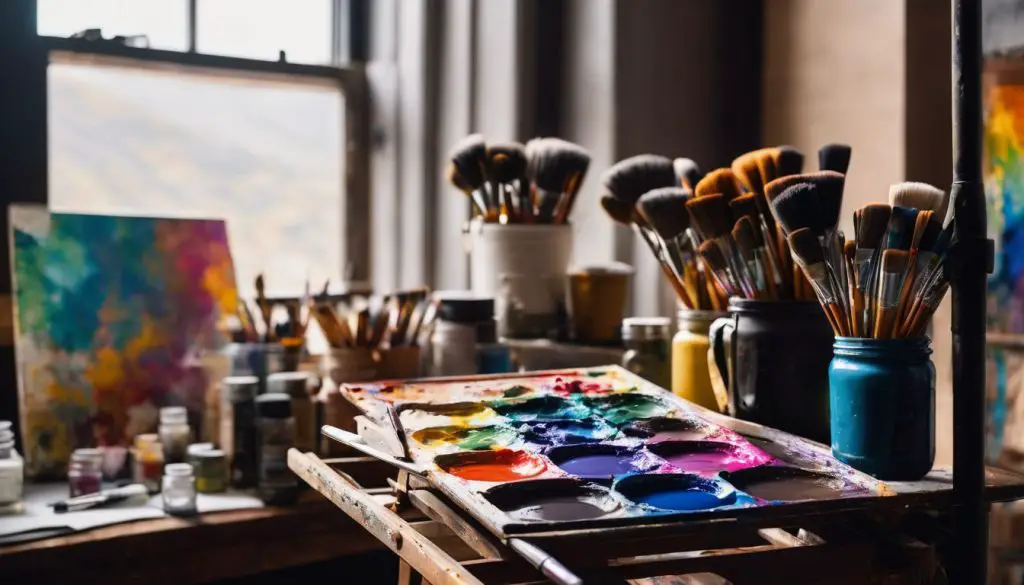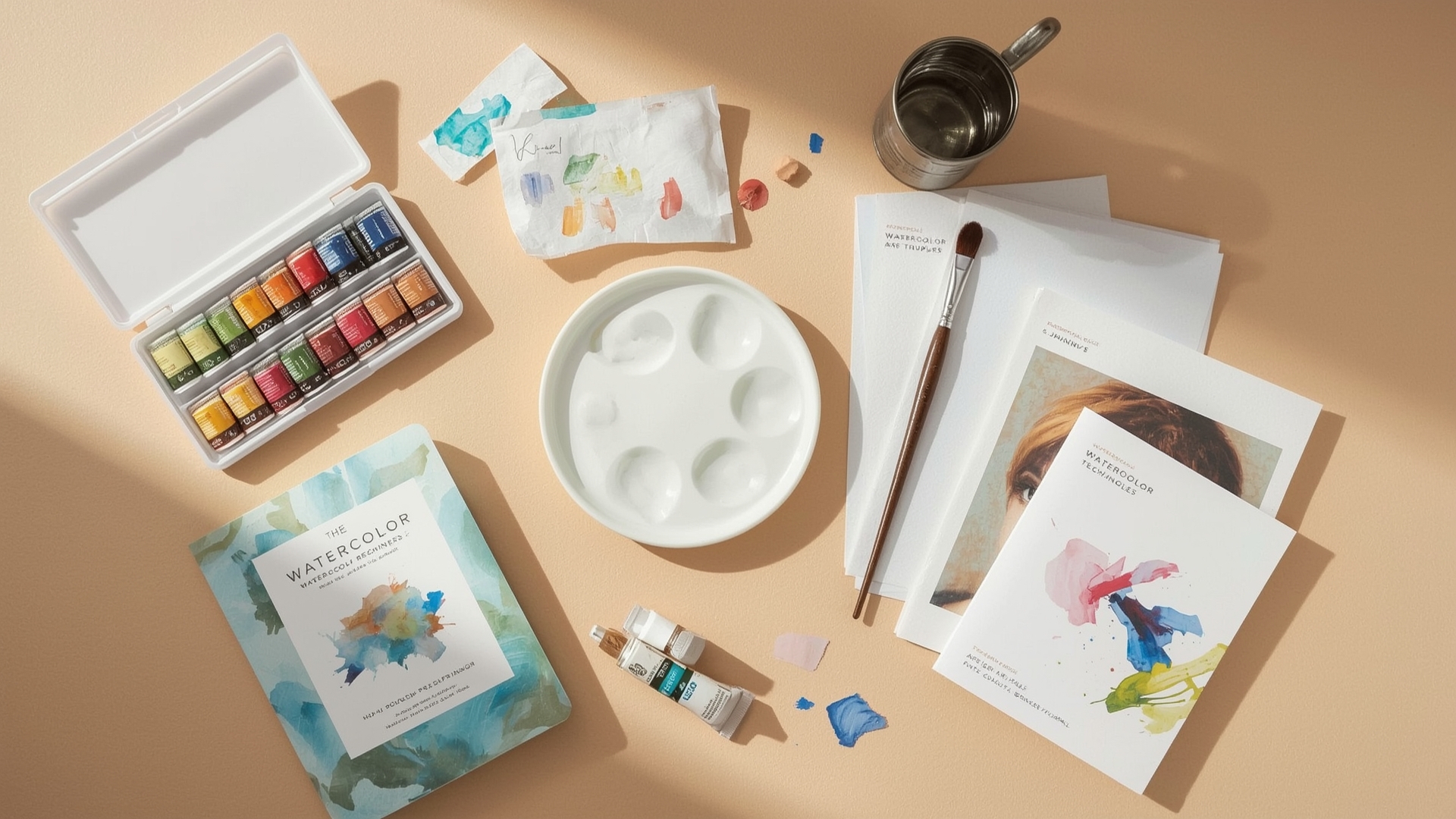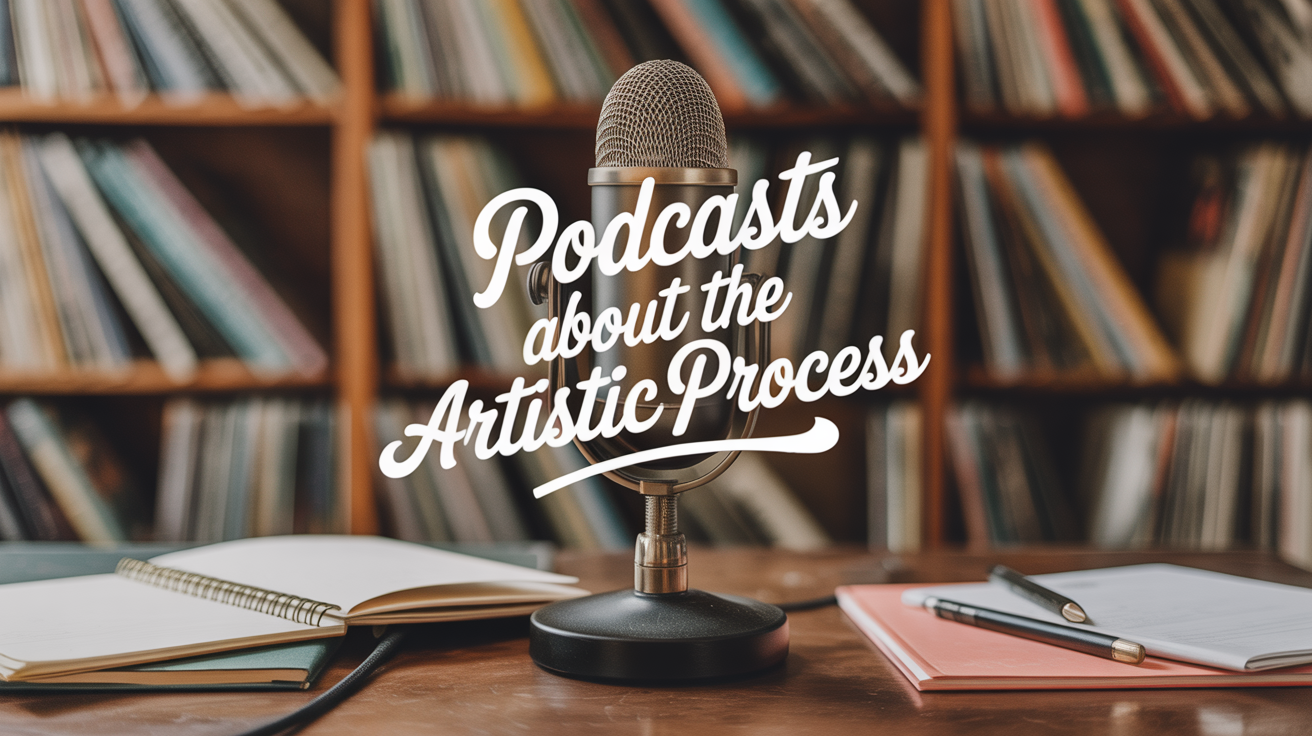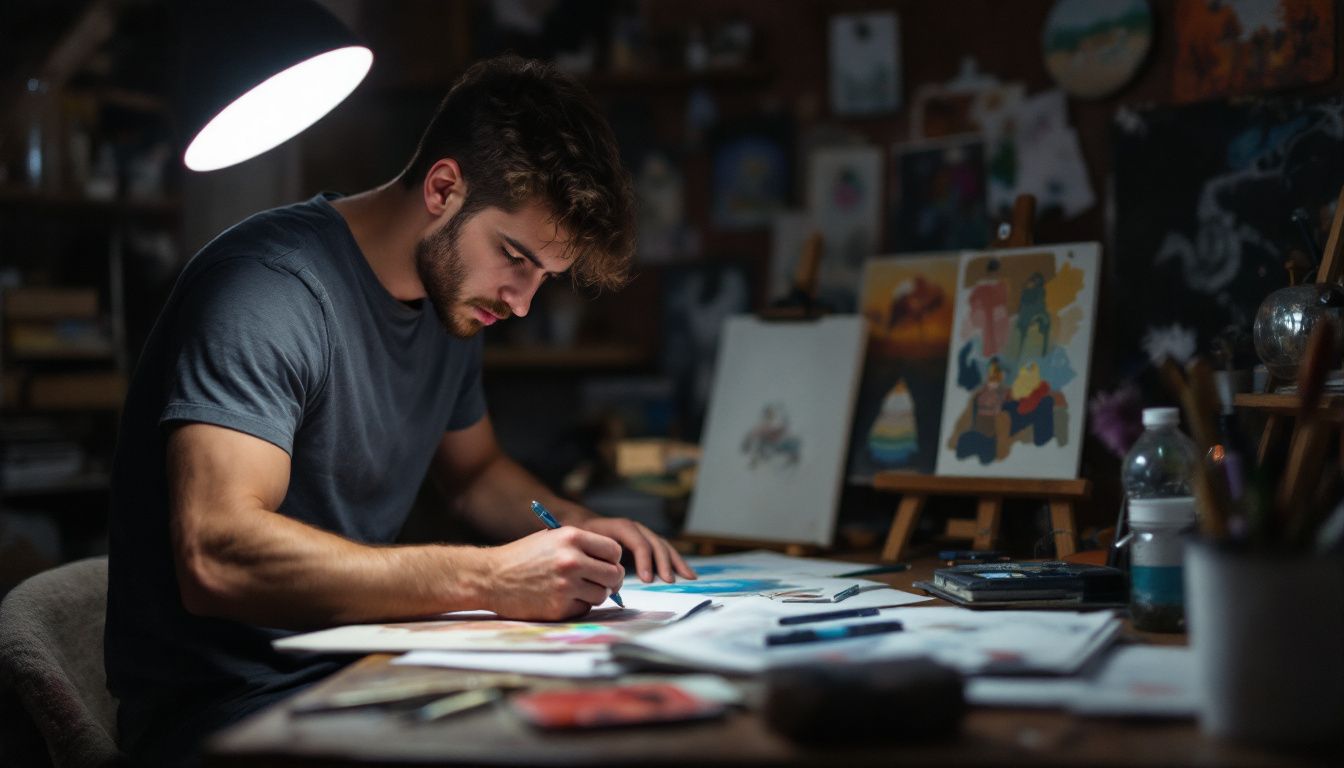What is Arts Education?

Have you ever wondered about the importance of arts education and its impact on students? Astoundingly, studies have shown that arts education can reduce school disciplinary infractions by 3.6 per cent.
In this blog post, we will delve into the world of arts education: what it is, its benefits, the challenges faced in implementing it, and a lot more!
Get ready for an artistic journey exploring the vibrant realm of learning through art!
Key Takeaways
- Arts education refers to the teaching and learning of various artistic disciplines, such as dance, music, visual arts, and performing arts.
- It helps students learn how to express themselves creatively and think critically.
- Arts education enhances creativity, develops critical thinking skills, improves academic performance, and fosters social and emotional development.
Table of Contents
Understanding Arts Education
Arts education refers to the teaching and learning of various artistic disciplines, such as dance, music, visual arts, and performing arts.
Definition of arts education
Arts education is about learning how to make and create art. It covers many forms of art. These could be visual arts like painting or sculpture.
They could also be performing arts such as music and dance.
Arts education helps students learn to use their imagination and creativity. It’s more than just making pretty pictures or nice music; it teaches us how people express ideas differently.
Scope of arts education
Arts education covers various artistic disciplines, including visual arts like painting and sculpture and performing arts like dance and music.
It goes beyond just learning specific techniques or creating artwork.
Arts education also includes teaching and learning about creativity, imagination, collaboration, and self-expression.
The broad scope of arts education can involve formal lessons in schools or art institutions and informal practice outside of traditional educational settings.
By engaging in arts education, artists can enhance their skills and knowledge in their chosen discipline.
In contrast, art students can explore their creative potential and deepen their appreciation for the arts.
Importance of arts education
Arts education plays a crucial role in the development of students. It is not just about painting or dancing but also teaches valuable skills that can be applied to different areas of life.
Students learn to express themselves creatively and think critically by participating in art lessons. This helps them develop new and innovative solutions to problems they may encounter.
Furthermore, arts education has been shown to improve academic performance. Studies have found that students exposed to the arts tend to have higher test scores and better grades than those not involved in such activities.
The arts stimulate the brain and encourage imagination, enhancing learning in other subjects.
In addition to academic benefits, arts education also fosters social and emotional development. Through collaboration with others during art projects or performances, students learn how to work together as a team and communicate effectively.
They also develop self-confidence by showcasing their talents in front of an audience.
Benefits of Arts Education
Arts education enhances creativity, develops critical thinking skills, improves academic performance, and fosters social and emotional development.
1. Enhances creativity and self-expression
Arts education plays a crucial role in enhancing creativity and self-expression.
Students are encouraged to explore their imagination and think outside the box by engaging in various artistic disciplines such as dance, music, and visual arts.
This allows them to express their unique ideas and perspectives through different art forms. Studies have shown that arts education nurtures creative thinking and boosts problem-solving skills.
By encouraging students to experiment with different techniques and approaches, they develop the ability to think critically and find innovative solutions.
Moreover, arts education provides a platform for students to showcase their talents and express themselves authentically, which promotes confidence and self-esteem.
2. Develop critical thinking and problem-solving skills
Arts education plays a crucial role in developing critical thinking and problem-solving skills.
Students who engage with different artistic disciplines like dance, music, painting, or sculpture are encouraged to think creatively and find innovative solutions to challenges.
Through art lessons and practice, they learn that there can be multiple ways to approach a problem and that small differences in their choices can greatly affect the outcome.
Research shows that arts education enhances cognitive abilities by stimulating imagination and creativity.
It encourages students to explore new ideas, connect with different concepts, and think critically about the world around them.
Artistic expression requires students to analyze situations, evaluate options, and make informed decisions – all valuable skills for problem-solving inside and outside the arts.
Furthermore, engaging in collaborative projects within arts education fosters teamwork and communication skills. Students learn to effectively communicate their ideas and listen to others’ perspectives.
This collaborative process helps develop critical thinking by challenging assumptions, questioning established norms, and finding common ground among diverse viewpoints.
3. Improves academic performance
Arts education has been shown to improve academic performance in students. Research indicates that students who participate in arts programs tend to have higher achievement levels in other subjects such as math, science, and language arts.
This is because the skills developed through arts education, such as critical thinking, problem-solving, and creativity, can be applied to various academic tasks.
Additionally, engaging in artistic disciplines like dance, music, and visual arts can enhance students’ cognitive abilities and increase their ability to retain information.
Incorporating arts education into the curriculum can positively impact students’ academic success.
4. Fosters social and emotional development
Arts education plays a crucial role in fostering social and emotional development.
When students engage in artistic disciplines such as dance, music, painting, or sculpture, they have opportunities to express their emotions and develop empathy towards others.
They learn to work together and build meaningful connections with their peers through collaboration and communication during group projects or performances.
Additionally, research shows that arts education promotes positive development in academic performance and social and emotional realms.
It helps students develop self-awareness, self-confidence, problem-solving, and resilience skills.
By exploring various forms of creativity and imagination through the arts, students can better understand themselves and appreciate the diverse perspectives of others.
Challenges and Considerations in Arts Education
Equity and access are significant challenges in arts education, as not all students have equal opportunities to participate and receive quality instruction in the arts.
Equity and access
Equity and access are important considerations in arts education. Everyone should have the opportunity to experience and benefit from arts education, regardless of their background or circumstances.
Unfortunately, there are challenges in ensuring equity and access for all. For example, not all schools have the resources or funding to provide comprehensive arts programs.
This can create disparities in opportunities for students to engage with the arts.
Additionally, there may be limitations in teacher training and support when teaching artistic disciplines like dance, music, and visual arts.
We must address these challenges and work towards a more equitable and accessible arts education system so that students can explore their creativity, develop skills, and experience the many benefits of engaging in the arts.
Funding and resources
Arts education faces challenges when it comes to funding and resources. It’s important to understand that federal funding for the arts is significantly less compared to other subjects like science.
This limited budget makes it difficult for schools and educators to provide comprehensive and quality arts education programs.
Lack of resources can also be a barrier to offering diverse artistic experiences. Many schools struggle to afford art supplies, musical instruments, or dance studios.
Without these necessary tools, students may not have the opportunity to fully explore different artistic disciplines.
Additionally, teacher training and support are crucial for effective arts education. However, limited funding often means fewer professional development opportunities for teachers in this field.
Lack of proper training may hinder educators from delivering high-quality arts instruction that engages and inspires students.
Integration into the curriculum
Integrating arts education into the curriculum ensures students have access to artistic experiences.
When integrated into the curriculum, arts education becomes a regular part of students’ learning and helps them develop creativity, critical thinking, and problem-solving skills.
By incorporating art lessons into subjects like math or history, students can see how art connects to different areas of their education.
This integration also allows for collaboration between teachers, providing opportunities for interdisciplinary learning.
Research shows that integrating arts education into the curriculum improves academic performance and engages students in their learning journey.
Art educators play a crucial role in this process by working with other teachers to plan lessons and activities that integrate art seamlessly into various subjects.
They can also provide professional development and training to help teachers feel confident in effectively incorporating art into their classrooms.
Funding and resources are crucial when integrating arts education, as they can impact the availability of supplies and materials needed for artistic practices.
Integrating arts education into the curriculum enhances the educational experience by fostering creativity, imagination, and collaboration among students while supporting their academic growth across multiple subject areas.
Teacher training and support
Teachers play a crucial role in arts education but need proper training and support to effectively teach and integrate the arts into their classrooms.
Ongoing professional development programs can provide teachers with the knowledge, skills, and resources they need to deliver high-quality arts instruction.
By participating in workshops or seminars, teachers can learn new teaching strategies and techniques that will help them engage students in creative activities.
Mentoring programs or peer collaboration opportunities allow teachers to learn from experienced educators and share best practices.
Providing adequate funding for teacher training and support is essential to ensure that all students have access to quality arts education.
Concluding Thoughts on What is Arts Education
Arts education is the teaching and learning of artistic disciplines
like dance, music, painting, and sculpture.It plays a significant role in enhancing creativity, critical thinking, problem-solving skills, and academic performance.
Arts education also fosters social and emotional development among students.
Despite equity, funding, curriculum integration, and teacher training challenges, arts education profoundly impacts students’ overall development and well-being.
FAQs
1. What is arts education?
Arts education teaches students about different art forms like painting, music, and dance.
2. What is the role and relevance of arts education?
The role of arts education is to give students a way to express themselves. It also plays a part in children’s growth by helping them see the world in new ways.
3. How does arts education impact kids?
The impact of arts education can be big! It helps kids think creatively, boost self-confidence, and appreciate beauty in the world around them.
4. Why should schools value arts education?
Schools should value arts education because it helps contribute to a well-rounded learning experience for students.
References:
- “New Evidence of the Benefits of Arts Education | Brookings.” Brookings, 27 June 2023, www.brookings.edu/articles/new-evidence-of-the-benefits-of-arts-education.
- “New Evidence of the Benefits of Arts Education | Brookings.” Brookings, 27 June 2023, www.brookings.edu/articles/new-evidence-of-the-benefits-of-arts-education.
- Long, Cindy. Express Yourself! Arts Integration in the Classroom | NEA. www.nea.org/nea-today/all-news-articles/express-yourself-arts-integration-classroom.



Leave a Reply